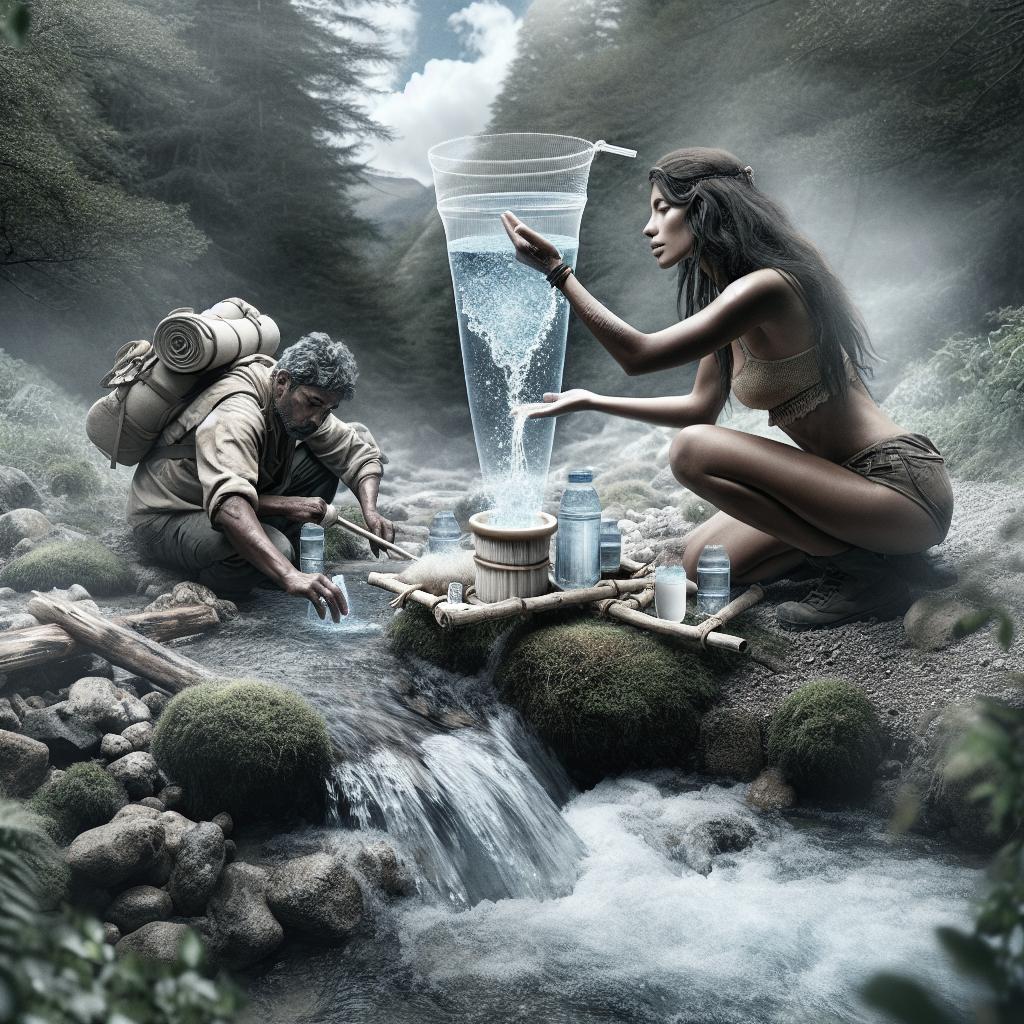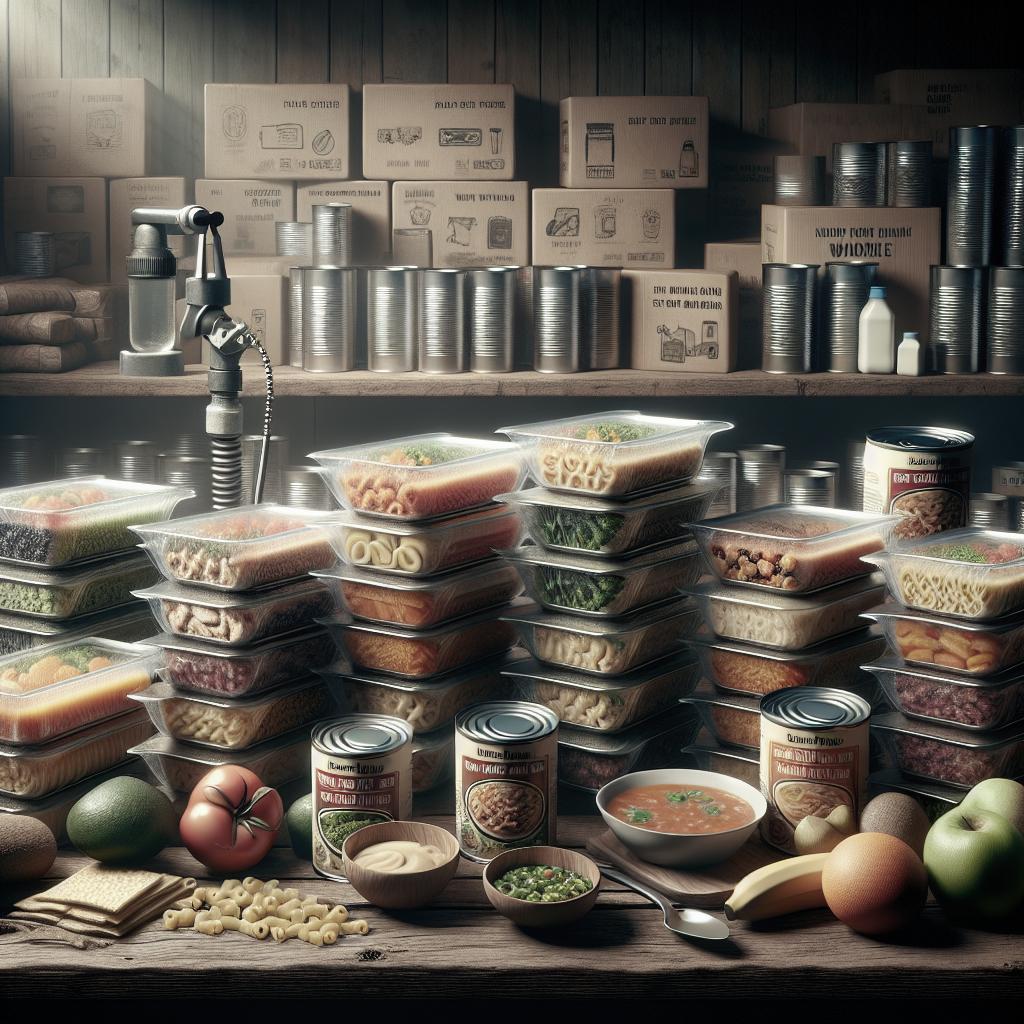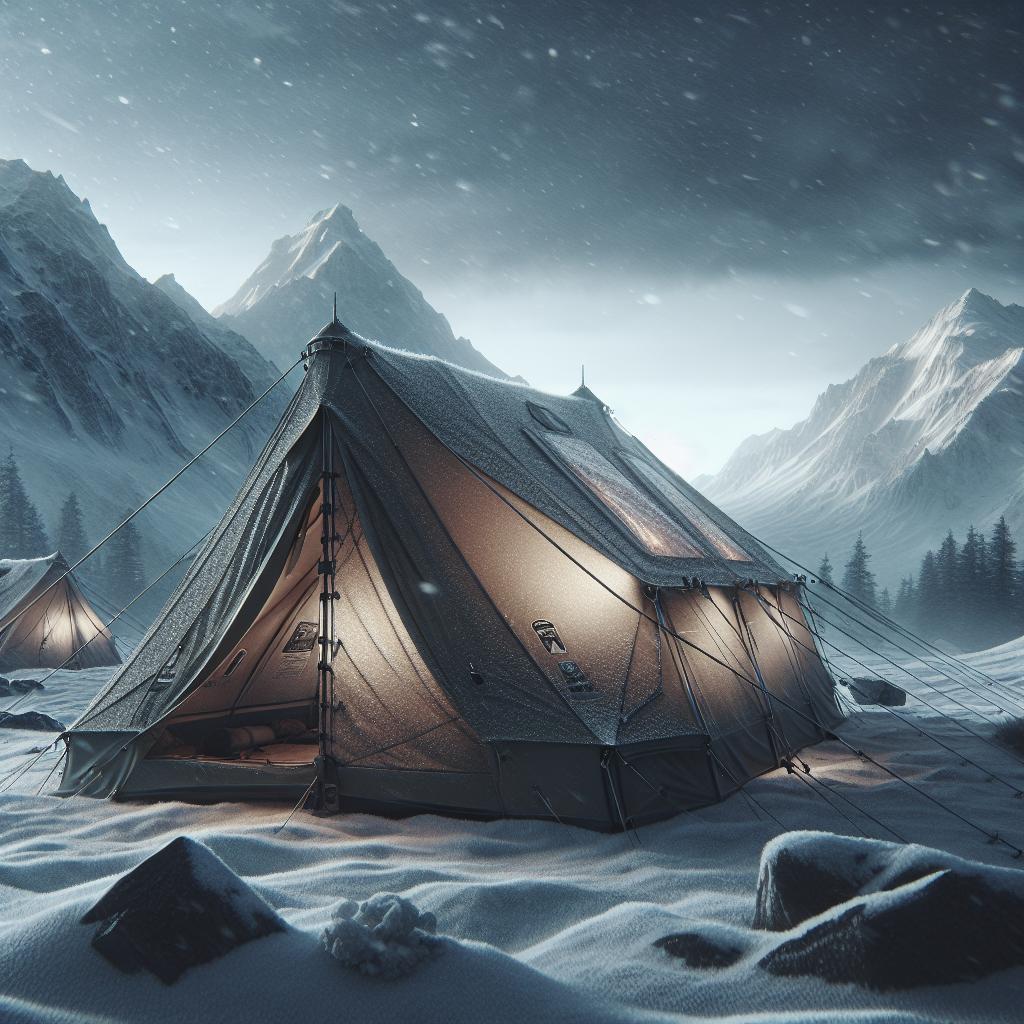<>
“`
Water is essential for survival, and in an emergency, ensuring you have access to clean and safe drinking water is crucial. This blog post will guide you through the process of making a makeshift water filter using readily available materials. We will discuss the materials needed, provide step-by-step instructions, offer additional water purification guidance, and cover other disinfection methods such as boiling and chemical treatments. With this knowledge, you’ll be better prepared to ensure safe water consumption during emergencies or outdoor adventures.
Make an Emergency/Makeshift Water Filter
In an emergency, having the ability to create a makeshift water filter can be a lifesaver. A basic water filter can help remove sediments, dirt, and some pathogens from water. The concept is simple: filter the water through different layers of materials that can trap impurities.
To build a makeshift filter, you can rely on everyday items such as plastic bottles, coffee filters, and natural materials like sand and charcoal. Each layer in your filter serves a different purpose, effectively removing larger particles and eventually reaching smaller and finer impurities.
Begin by cutting the bottom off a plastic bottle and inverting it, so it functions like a funnel. Layer different materials inside the bottle, starting with larger ones like gravel and moving towards finer ones such as sand and activated charcoal. This filtration method works through gravity, as the water flows from the top to the bottom, picking up impurities and contaminants along the way.
Materials Needed
To create an emergency water filter, gather the following materials: a plastic bottle, coffee filters or a piece of cloth, activated charcoal, fine and coarse sand, gravel, and a container to collect the filtered water. Each of these materials serves a specific purpose in filtering out contaminants in the water.
The plastic bottle will serve as the structure for your filter. The coffee filters or cloth act as the first barrier to catch large particles. Activated charcoal is a crucial component because it removes impurities and many pathogens. Fine and coarse sand will filter out tinier particles and improve water clarity, while gravel will help with initial filtration and prevent finer materials from getting clogged.
In addition to these materials, having a knife or scissors to cut the bottle and a suitable container to collect the filtered water is essential. If you’re in a wilderness setting, you might need to get creative and use available resources, but these basic materials are often easy to find or improvise in many situations.
Making the Filter
Start by cutting off the bottom of the plastic bottle to create an open-ended funnel. Flip the bottle upside down so the neck acts as the exit point for filtered water. Begin layering the materials, placing a coffee filter, or some cloth, at the bottle’s neck to catch large debris.
Next, add a layer of activated charcoal. This layer is critical because activated charcoal adsorbs contaminants, including many bacteria, viruses, and chemicals. Crushed charcoal works best as it increases the surface area for better filtration.
Follow this by adding a layer of fine sand, then a layer of coarse sand. These layers will trap tiny particles and impurities. Finally, top it off with a layer of gravel, which prevents sand from washing through and helps to catch larger debris. Pour water through the layers and collect the filtered water at the bottom. Repeat the process if necessary to improve water clarity and safety.
Additional Water Guidance
While a makeshift water filter is invaluable in emergencies, it is not foolproof. Always assume that filtered water still needs further purification before it is safe to drink. Boiling is one of the most reliable methods to kill viruses, bacteria, and protozoa. Bring the water to a rolling boil for at least one minute. At higher altitudes (above 6,500 feet or 2,000 meters), extend boiling time to three minutes.
Certain environments may contain chemical contaminants, which typical makeshift filters cannot remove. If you suspect chemical contamination, seek out specialized filtration systems designed to handle such pollutants. Moreover, remember that filtration and boiling do not remove heavy metals and other non-biological contaminants.
In addition to boiling, you can use chemical treatments to make water safe. Water purification tablets containing iodine or chlorine dioxide are effective and easy to carry. Always follow the instructions on the packaging to ensure proper disinfection. However, these treatments can alter the taste of the water and are not suitable for long-term use.
Other Disinfection Methods
In situations where boiling is not practical, and additional filtration is required, there are other methods to disinfect water. Solar disinfection (SODIS) is one viable approach. Fill clear plastic bottles with water and expose them to direct sunlight for at least six hours. UV rays from the sun can neutralize many harmful microorganisms.
Another alternative is using a combination of bleach and filtering. Regular household bleach (without dyes or scents) can disinfect water. Add eight drops (or 1/8 teaspoon) of bleach per gallon of clear water, stir, and let it stand for at least 30 minutes. This method can effectively kill pathogens, but it should only be used as a temporary solution because of potential health hazards from prolonged exposure to bleach residuals.
For those with access to technology, portable UV purifiers and advanced filtration systems are excellent tools. These devices are designed to kill or remove pathogens and chemicals from water directly, providing an additional layer of safety. Though more expensive, they are highly effective for ensuring clean water during prolonged emergencies or expeditions.
Future Prospects
| Section | Summary |
|---|---|
| Make an Emergency/Makeshift Water Filter | Using readily available materials like plastic bottles, charcoal, sand, and gravel, you can create a simple yet effective water filter in emergencies. |
| Materials Needed | Gather materials such as plastic bottles, coffee filters, activated charcoal, two types of sand, and gravel to construct your filter. |
| Making the Filter | Cut the bottle, and layer materials starting from the coffee filter to gravel to create various filtration stages, trapping different impurities at each stage. |
| Additional Water Guidance | Even after filtering, further disinfection like boiling or using purification tablets may be necessary to ensure the water is entirely safe to drink. |
| Other Disinfection Methods | Alternative methods like solar disinfection, bleach treatment, and using portable UV purifiers can be used for reliable water disinfection during emergencies. |
“`


